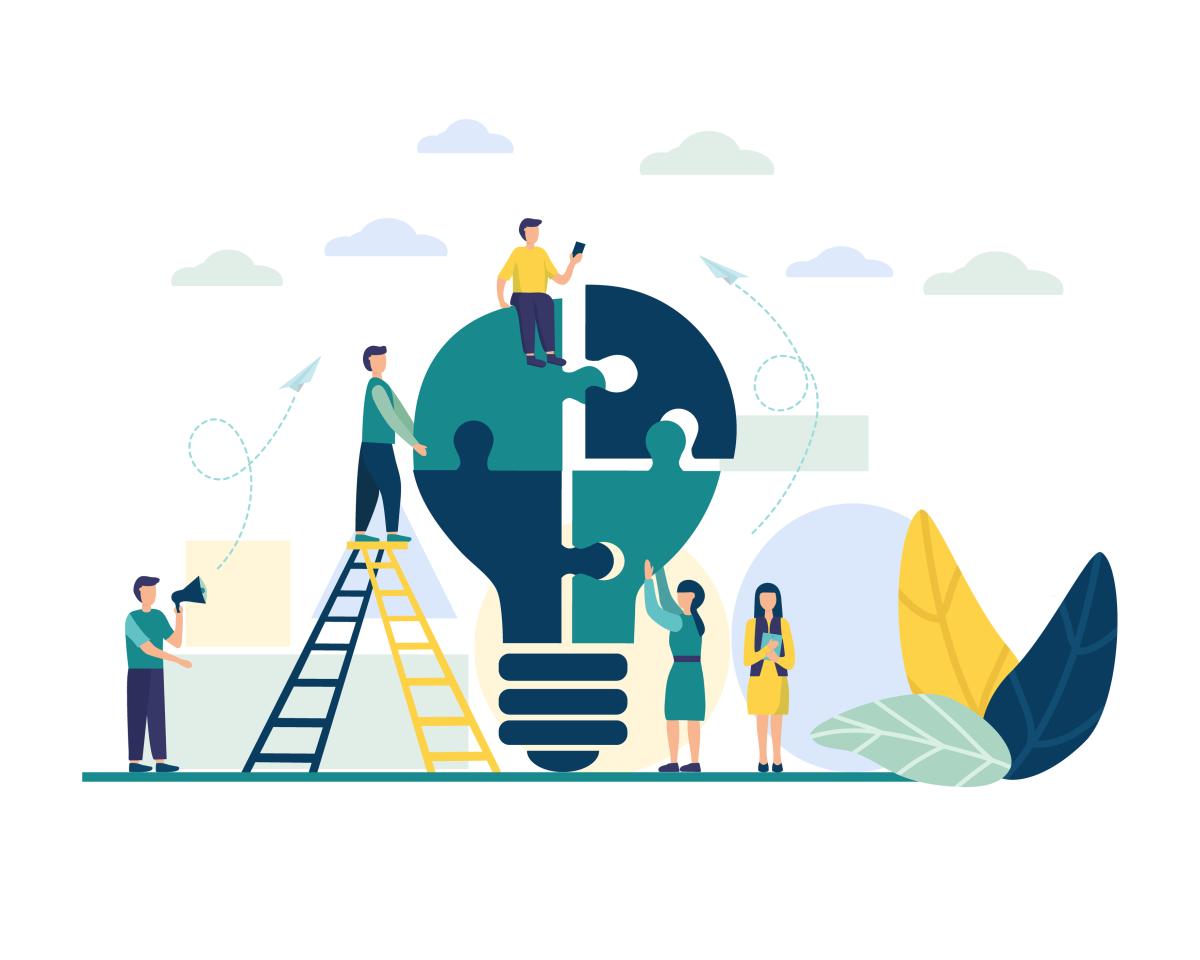...
How would you like to be a Guest Blogger for KMI? Email us at: info@kminstitute.org and let us know your topic(s)!
Advancing Green Solutions: How Knowledge Graphs Can Contribute to Sustainable Infrastructure
 As the threat of climate change continues, the call for sustainable infrastructure to integrate more quickly beckons. Innovative solutions are essential yet complex. Activists, architects, and engineers need to garner buy-in from governments and other funding organizations to enact eco-friendly infrastructure plans. Learn how to integrate knowledge graphs into sustainable infrastructure plans and presentations to transcend traditional data models and facilitate swift navigation of complex environmental and structural challenges.
As the threat of climate change continues, the call for sustainable infrastructure to integrate more quickly beckons. Innovative solutions are essential yet complex. Activists, architects, and engineers need to garner buy-in from governments and other funding organizations to enact eco-friendly infrastructure plans. Learn how to integrate knowledge graphs into sustainable infrastructure plans and presentations to transcend traditional data models and facilitate swift navigation of complex environmental and structural challenges.
The Complexity of Climate Change Solutions for Infrastructure
Sustainable infrastructure can mean many things, including but not limited to designs and materials of roads, buildings, waterways, and energy structures that:
- Lower carbon emissions;
- Boost resiliency to extreme weather events;
- Increase employment, specifically in eco-conscious sectors;
- Preserve and creatively utilize natural ecosystems;
- Enrich human rights and standards;
- Are financially viable;
- Facilitate tech and industrial innovation.
This encapsulates the end goal of providing sustainable infrastructure options to the entire world. However, it’s much easier said than done. Sustainable infrastructure advocates and professionals must consolidate these plans into actionable, digestible projects.
Why Knowledge Management Is So Important
Knowledge management is crucial to the effective implementation of sustainable infrastructure objectives. It amalgamates information that is pertinent to the task(s) at hand into a tangible resource that allows for:
- Quicker project development;
- Effective leveraging of diverse knowledge bases across teams;
- Collective problem-solving;
- Innovative thinking;
- Avoidance of costly errors that arise from miscommunications or a lack of info;
- Increased shareholder connectivity;
- Holistic insights on progress.
Green upgrades to infrastructure must be made swiftly to avoid further catastrophic effects on the planet. Knowledge management ensures that teams working on sustainable infrastructure projects have access to all of the information needed to push projects forward quickly and accurately. There is no time to waste on missed emails or failed funding opportunities. Instead, teams must knowledge-map everything they know about sustainable infrastructure into easily digestible graphs.
Distilling Pertinent Information Into Knowledge Graphs
 It may seem overwhelming to try to cram the entire knowledge of your sustainable infrastructure team into a few graphs. However, the benefits make the tedious process worth it — and there are tools like mind mapping software that can help streamline things. You can integrate key notes from your team directly into the knowledge graph, as well as easily divide a parent topic into subtopics with directions denoted in the software. Different professionals work best in various ways, so software like this can also help facilitate learning with color coding, doodles, and featured images for each topic in the graph.
It may seem overwhelming to try to cram the entire knowledge of your sustainable infrastructure team into a few graphs. However, the benefits make the tedious process worth it — and there are tools like mind mapping software that can help streamline things. You can integrate key notes from your team directly into the knowledge graph, as well as easily divide a parent topic into subtopics with directions denoted in the software. Different professionals work best in various ways, so software like this can also help facilitate learning with color coding, doodles, and featured images for each topic in the graph.
Software programs can speed up the process of distilling information and allow for collaborative notes and workspaces in real-time.
When creating these knowledge graphs, strive to include aspects such as:
- Aggregated data from diverse sources, directly relevant to infrastructure plans;
- Semantic linking, such as nodes that represent entities like solar panels or water treatment plants and edges that represent impacts or roadblocks;
- Contexts like geographical, temporal, and social demographics of the area that affect key factors like biodiversity, costs, and timelines;
- Simple visualization cues, like nodes and lines with a color key denoting certain attributes;
- Potential risks, connecting them with possible causes and solutions.
Remember that these knowledge graphs can be updated as you go. Your team should be able to hop into the software and adjust as needed. The point of knowledge graphs is to consolidate information but also highlight areas for improvement. Editable graphs are crucial to facilitate innovative infrastructure planning.
Showcasing Sustainable Infrastructure Solutions
Innovations in sustainable infrastructure exist to solve some sort of problem. Highlighting a target challenge in your knowledge graph will serve as a catalyst for innovative solutions amongst your team. For instance, you could focus one knowledge graph on the integration of renewable energy sources into power grids. Map out the challenges with renewable energy implementation, such as achieving grid stability and dealing with network inadequacy. Then, team members can map out potential solutions, like enhancing grid capacity, adapting existing structures, and conducting voltage control.
Leveraging knowledge graphs for complex challenges like these can enhance understanding of what it takes to achieve sustainable infrastructure. Teams can visualize the complex relationships between existing structures and desired outcomes, identifying vulnerabilities and facilitating targeted design solutions. This brings together different departments to bridge communication gaps and unlock innovative ideas — but it also distills information into digestible formats for investors and stakeholders.
Getting Buy-In To Advance Green Infrastructure
Creative solutions for green infrastructure are only as viable as those who back them. Stakeholder buy-in can be garnered and nurtured by utilizing similar knowledge graphs to the ones your team uses internally. Allowing investors, policymakers, and other stakeholders to visualize a shared end goal is instrumental in getting buy-in. Knowledge graphs can help you clearly communicate the environmental, economic, and social benefits of green infrastructure. Tailor each graph to the values and long-term goals of the stakeholders to which you are speaking for optimal results.
Moving Toward Sustainable Infrastructure Through Shared Knowledge
Collaboration is key to pushing forward sustainable infrastructure efforts. Government officials, architects, engineers, marketing departments, and more nuanced teams need to all have a firm grasp on the vision for infrastructure’s green future. With knowledge graphs, you can harmonize a diverse array of ideas and data points to form a future where infrastructure not only avoids harming the planet but also works toward a more resilient life for future generations.
 Amanda Winstead is a writer from the Northwest US area with a background in communications and a passion for telling stories. She has been following Knowledge Management for several years and it's one of her favorite topics to explore. Along with writing she enjoys traveling, reading, working out, and going to concerts.
Amanda Winstead is a writer from the Northwest US area with a background in communications and a passion for telling stories. She has been following Knowledge Management for several years and it's one of her favorite topics to explore. Along with writing she enjoys traveling, reading, working out, and going to concerts.
If you want to follow her writing journey, or even just say hi you can find her on Twitter or LinkedIn or check out her portfolio.
Other Featured Blogs:
Effective Techniques for Closing Organizational Knowledge Gaps
Leveraging Knowledge Management to Detect and Address Employee Burnout
Archives
- May 2024 (4)
- April 2024 (5)
- March 2024 (4)
- February 2024 (4)
- January 2024 (3)
- December 2023 (2)
- November 2023 (2)
- October 2023 (3)
- September 2023 (3)
- August 2023 (6)












 We...
We...
